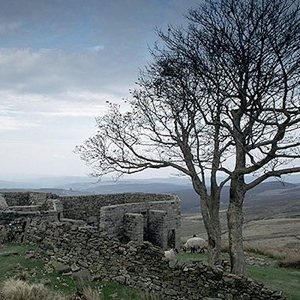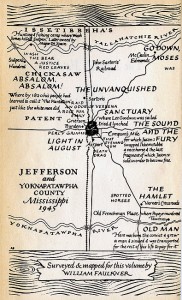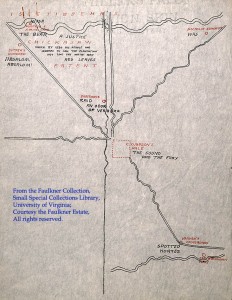In 1978, British singer/songwriter Kate Bush released “Wuthering Heights,” a song inspired by Brontë’s novel. Bush wrote the piece when she was 18 and discovered that she and Emily B shared a July 30 birthday. “Wuthering Heights” has proved to be Bush’s most famous and popular song, which has been covered by multiple artists in the years since. Below are the song’s lyrics and three videos. The first is the UK release of “Wuthering Heights” by Kate Bush. In the second, New Zealand soprano Hayley Westenra covers the song, and the imagery suggests events and imagery from the book. The third one is American rock singer Pat Benatar’s cover. Benatar is an operatically-trained soprano, so her rock version is a little different than you might expect. The cut was included on her 198o album Crimes of Passion, but it was never released for radio play.
Out on the wiley, windy moors
We’d roll and fall in green
You had a temper, like my jealousy
Too hot, too greedy
How could you leave me
When I needed to possess you?
I hated you, I loved you too
Bad dreams in the night
They told me I was going to lose the fight
Leave behind my wuthering, wuthering
Wuthering Heights
Heathcliff, it’s me, I’m Cathy, I’ve come home
I’m so cold, let me in in your window
Heathcliff, it’s me, I’m Cathy, I’ve come home
I’m so cold, let me in in your window
Oh it gets dark, it gets lonely
On the other side from you
I pine a lot, I find the lot
Falls through without you
I’m coming back love, cruel Heathcliff
My one dream, my only master
Too long I roam in the night
I’m coming back to his side to put it right
I’m coming home to wuthering, wuthering
Wuthering Heights
Heathcliff, it’s me, I’m Cathy, I’ve come home
I’m so cold, let me in in your window
Heathcliff, it’s me, I’m Cathy, I’ve come home
I’m so cold, let me in in your window
Ooh let me have it, let me grab your soul away
Ooh let me have it, let me grab your soul away
You know it’s me, Cathy
Heathcliff, it’s me, I’m Cathy, I’ve come home
I’m so cold, let me in in your window
Heathcliff, it’s me, I’m Cathy, I’ve come home
I’m so cold, let me in in your window
Heathcliff, it’s me, I’m Cathy, I’ve come home
I’m so cold



 Foldables (as anyone who’s ever has Mrs. Parm for a class would know) can prove to be a very helpful study aid. We’ll be using a simple foldable to collect textual support for your seminar on Light in August.
Foldables (as anyone who’s ever has Mrs. Parm for a class would know) can prove to be a very helpful study aid. We’ll be using a simple foldable to collect textual support for your seminar on Light in August. Much like English novelist Thomas Hardy, whose “Wessex” is a fictional amalgam of real locations, Faulkner based Yoknapatawpha County on very real places. Faulkner lived for most of his life in Oxford, Mississippi. In Faulkner’s work, Oxford becomes the town of Jefferson, while the real Jefferson County is named “Yoknapatawpha” after the old Chickasaw word for the Yocona River south of town. The county is located in north central Mississippi not far from the Tennessee border. This 1947 map indicates the primary locations of several of Faulkner’s major works, including not only Light in August but also his masterworks Absalom, Absalom! and The Sound and the Fury.
Much like English novelist Thomas Hardy, whose “Wessex” is a fictional amalgam of real locations, Faulkner based Yoknapatawpha County on very real places. Faulkner lived for most of his life in Oxford, Mississippi. In Faulkner’s work, Oxford becomes the town of Jefferson, while the real Jefferson County is named “Yoknapatawpha” after the old Chickasaw word for the Yocona River south of town. The county is located in north central Mississippi not far from the Tennessee border. This 1947 map indicates the primary locations of several of Faulkner’s major works, including not only Light in August but also his masterworks Absalom, Absalom! and The Sound and the Fury.

Wuthering Heights Family Tree
Although Emily Brontë helpfully includes a family tree to explain the relationships among her characters, understanding them takes a little work. Here are some helpful ways to discern who she’s talking about:
Wuthering Heights focuses on two Yorkshire families, the Earnshaws, who live at Wuthering Heights, and the Lintons, who live at Thrushcross Grange.
EARNSHAWS
Based on the inscription found over the door, Wuthering Heights was most likely built by a man named Hareton Earnshaw around the year 1500. That makes the Earnshaw family a very old one and probably accounts for their prominence in the society. Mr. and Mrs. Earnshaw have two children, Hindley and Catherine. Mr. Earnshaw adopts an orphan boy and brings him home to raise as a second son. This boy is given the name of a son who died in childbirth that, as Nelly Dean says, “has served him ever since, for both Christian and surname”: Heathcliff.
Hindley does not react well to this new addition to the household, but Catherine becomes very close to him. When old Mr. Earnshaw dies, Hindley inherits Wuthering Heights and becomes the guardian of his sister Catherine. Hindley treats Heathcliff like a servant rather than an adopted brother. He eventually marries a woman named Frances, who gives birth to their son, Hareton.
LINTONS
Down in the valley, Mr. and Mrs. Linton live a very comfortable and wealthy lifestyle at Thrushcross Grange. Like the Earnshaws, the Lintons have both a son, Edgar, and a daughter, Isabella. The two families are familiar with each other, but they don’t come into close contact until Catherine Earnshaw is injured during a visit and ends up recuperating for a few weeks at Thrushcross Grange. It is then that she gets to know Edgar and he eventually proposes marriage. Despite her love for Heathcliff, she accepts. Catherine dies giving birth to her daughter with Edgar, who is given her name. Catherine Linton is known in the book as Cathy.
HEATHCLIFF
Although raised with the Earnshaws, Heathcliff decides he owes them no allegiance. After Catherine marries Edgar, the penniless Healthcliff leaves the area for several years, returning as a fabulously wealthy man (no one really knows how he got his money). To spite Edgar and Catherine, Heathcliff then elopes with Edgar’s sister Isabella. They have one son together, who is named Linton after his mother’s family.
(Image from the York Notes Wuthering Heights AS&A2, the British SparkNotes)
Comments Off on Wuthering Heights Family Tree
Filed under AP Literature
Tagged as AP, commentary, reading, Wuthering Heights